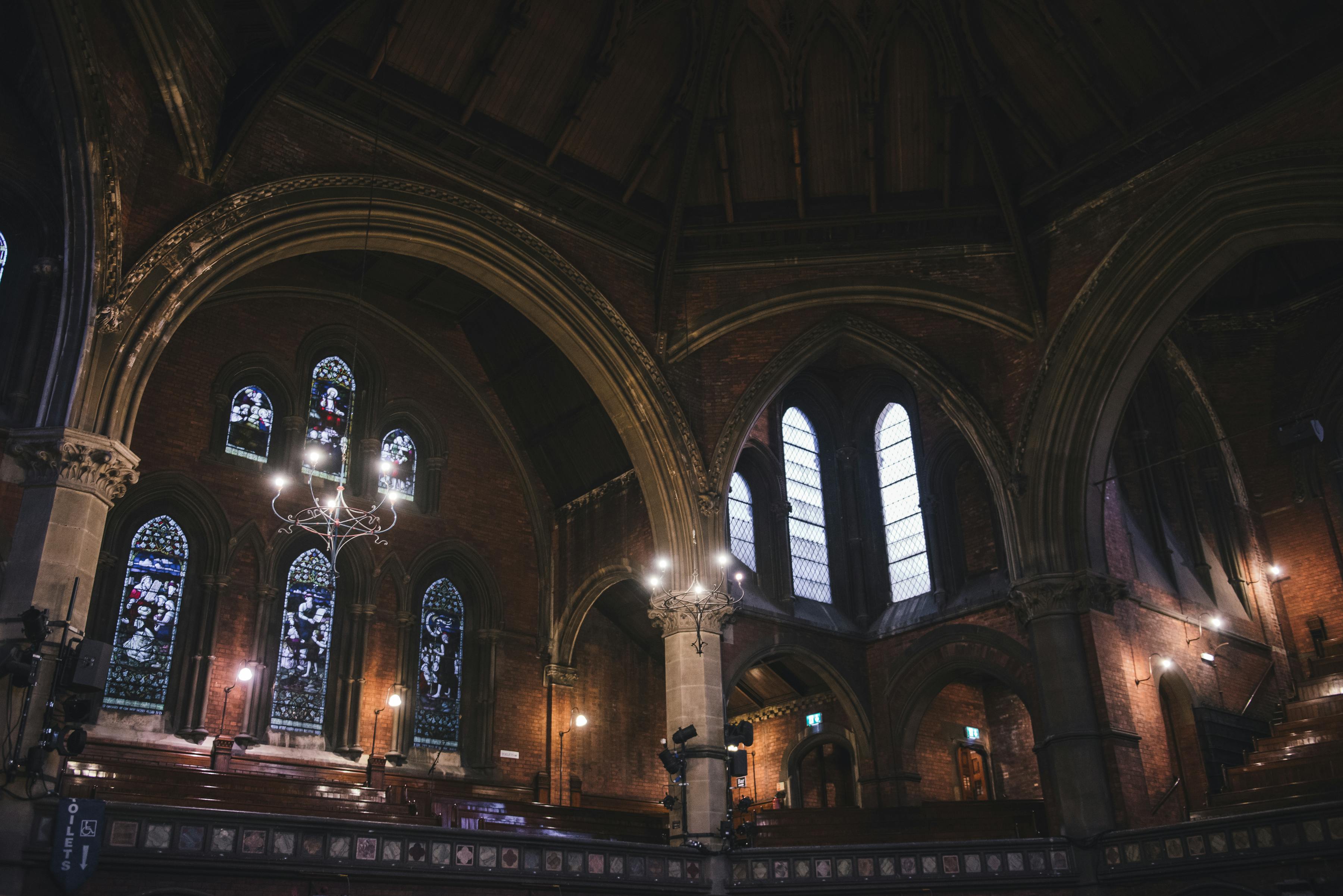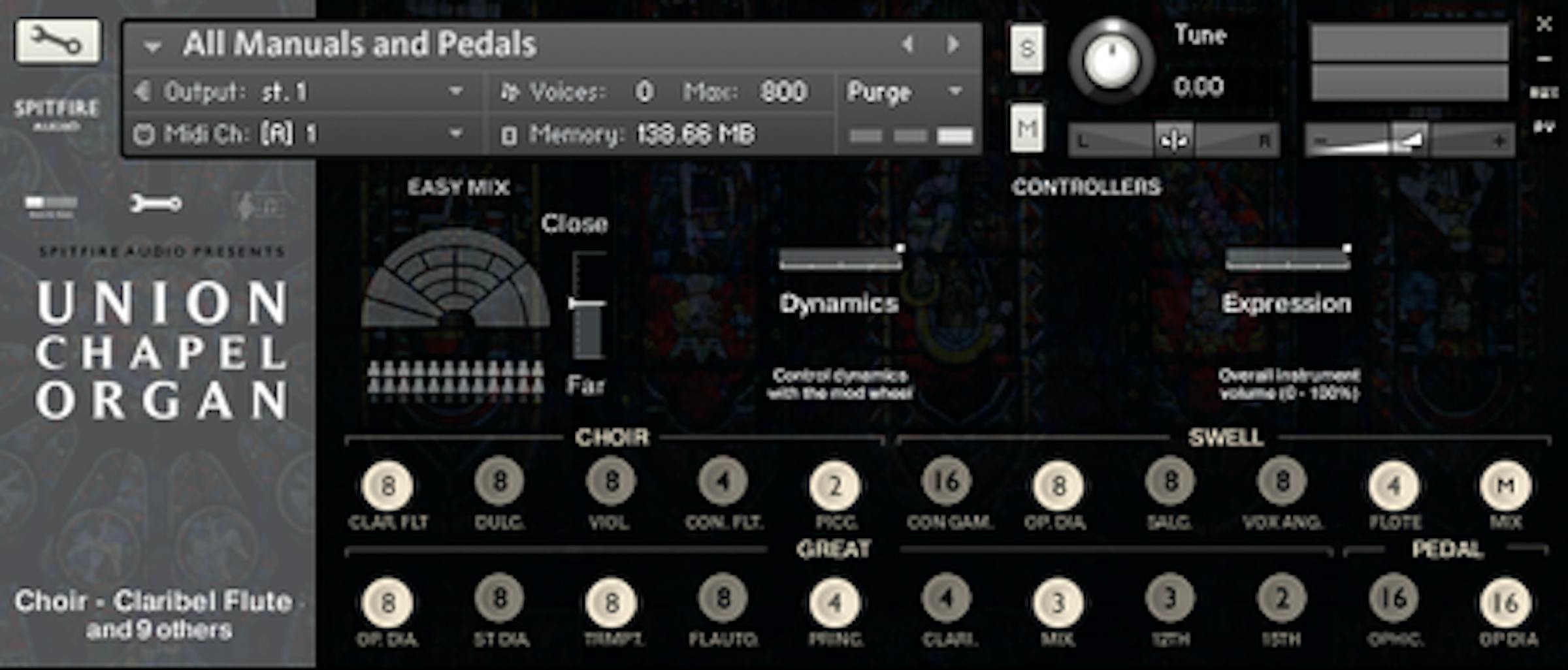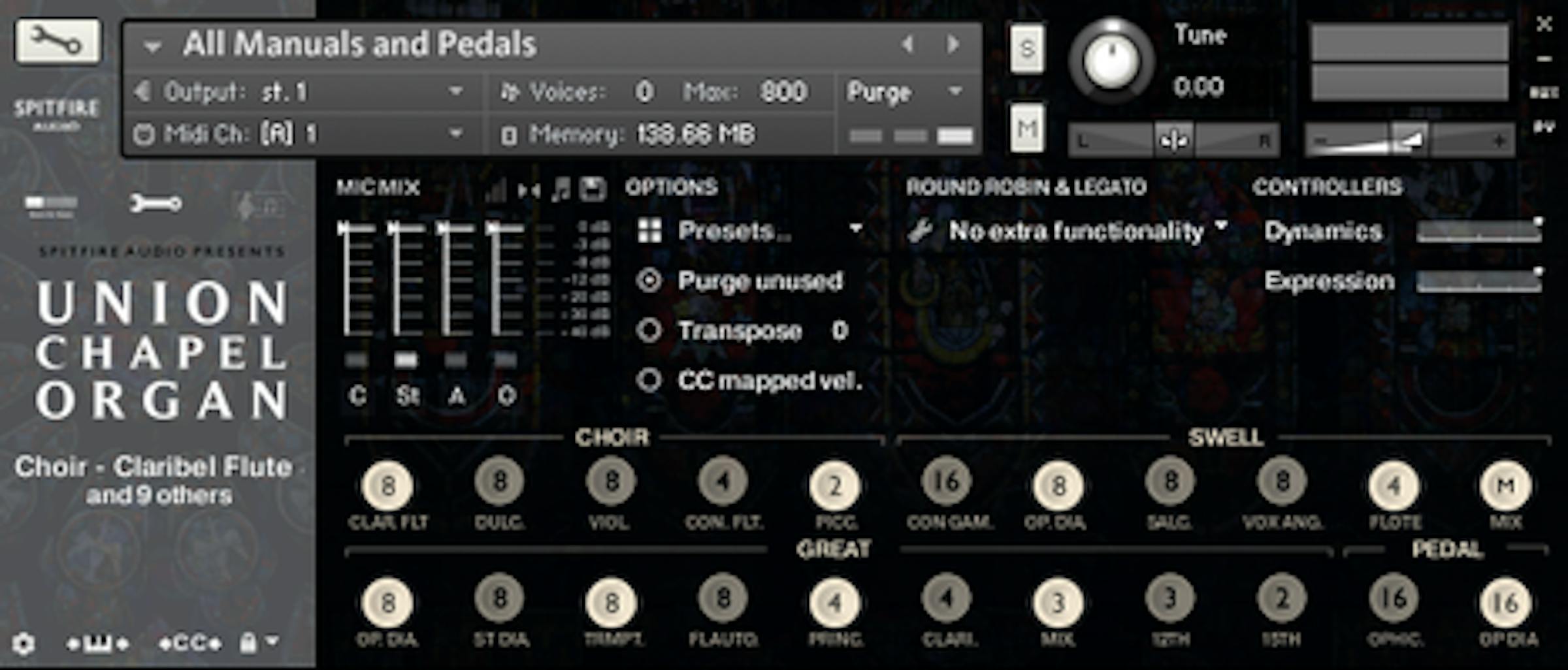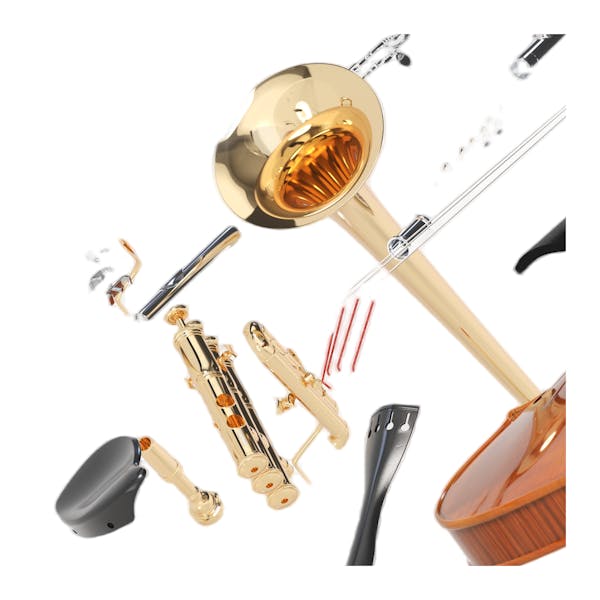Union Chapel Organ
Legendary London organ
Legendary London organ
In this page:
- Hard drive delivery available at checkout
- You can buy now and download any time
 Spitfire Audio App required
Spitfire Audio App required
50+ presets
eDNA engine
Kontakt Full
Listen to Union Chapel Organ
Features Spitfire Symphonic Strings
Features eDNA Earth and Hans Zimmer Piano
The organ at London’s Union Chapel was built by Henry ‘Father’ Willis in 1877 specifically to match the size and acoustics of the building, and is undoubtedly one of the finest in the world. Henry Willis, regarded as the foremost organ builder of the Victorian era, also built the organs at the Royal Albert Hall and St Paul’s Cathedral.
The Union Chapel Organ remains essentially unaltered. The only significant changes have been the replacement of the Choir Gemshorn 4ft by a 2ft Piccolo in 1909, the provision of electric blowing in the 1920s, and the installation of a balanced swell pedal in the 1940s. As an important example of ‘Father’ Willis's work, in 2012-13 the organ was fully restored by organ builders Harrison & Harrison based on historic principles. The original hydraulic blowing engines (water powered) have also been restored to working order by James Richardson-Jones and are retained as an alternative to electric blowing (one of very few left in the world!). It has three manuals, Swell, Great, Choir, and a full pedalboard. Spitfire co-founder Paul Thomson grew up sat on the organ stool. From playing in churches before he could reach the pedal board, to practicing at night locked alone in Worcester Cathedral as a teenager, he has always had a soft spot in his heart for this instrument. After finding the perfect organ to sample, this became a pet project.
The organ is like an orchestra, from charming flutes to trumpets and trombones, with many interesting harmonic mixtures and options for voicing. You can set up different sounds on the manuals and pass from one to another, or combine them for a greatly amplified sound character.
The humble organist can have an orchestra of a thousand voices.

Paul and his colleagues at Spitfire waited a long time before selecting the organ they wanted to sample, and the timing was perfect with the restoration and the collaboration with the Union Chapel. They started the project back in 2013 and many hours were spent during the night recording! This instrument has bags of character and can go from extraordinarily soft and delicate to full thunder and power while never sounding slightly synthetic or brittle like some of the later instruments. As a bonus feature, Spitfire’s team of sound designers have created 10 eDNA presets using the raw materials of the Organ, which have most recently featured in the 2016 Paul Feig reboot of Ghostbusters, plus a Dev Kit for the user to create their own unique Synths, Basses, Atmospheres and Rhythmic pulsing patches. As an instrument, the pipe organ has featured in many films and on many albums over the years, a sampling includes most recently Interstellar, Rollerball, 2001 A Space Odyssey, many of Danny Elfman's scores including his two Batman films, Koyaanisqatsi, The Omega Man, Interview With a Vampire, Patton and The Godfather.

The overview panel
This is the main interface for melodic instruments. Its default view displays all available playing techniques, has a simple microphone mixer and includes the main feature controllers.

General controls panel
This view allows further in-depth control of the instrument, showing all available signals and feature controllers, as well as the ability to purge techniques from memory to reduce system usage.
What's included
Articulations
- All Manuals and Pedals
- Choir Manual
- Great Manual
- Pedals
- Swell Manual
eDNA
Dev kits
- Union Organ eDNA - Close
- Union Organ eDNA - Stereo
- Union Organ eDNA - Warps
- A Big Ass Organ 1 - Stereo
- A Big Ass Organ 2a - Stereo
- A Big Ass Organ 2b - Stereo
- A Big Ass Organ 3 - Stereo
- A Big Ass Organ 3b - Stereo
- Atmospheric Organ Pad - MW is LPF
- Big But Tuney - Stereo
- Calming Beauty MW is Phase
- Classic Organ MW Chorus
- Deep Organ - Stereo
- Dissonant Space Organ Pad MW
- Distant Detuned Organ Pad - MW is LPF
- Dreamy Organ
- Flutey Organ Pad
- Giant Dirt Organ MW is Drive
- Glassy Organ Pad
- Good As Low 8ve Drone MW - Filter
- Hypnotic Drone MW is Gate Vol
- Impending Organ - MW is dynamics
- Mellow Organ Pad 2 MW - Gate and Phaser
- Mellow Organ Pad MW - Gate and Phaser
- Mellower Organ Pad MW - Gate and Phaser
- Overtone Organ Pad - MW is pitch LFO
- Space Organ MW is Glide
- Space Organ
- Spooky Organ Bells 2
- Spooky Organ Bells
- Spooky Organ MW - Spookiness
- Stutter Organ MW is LPF and Gate
- The Scientific Organ MW - LPF
- Very Nasty Lead Organ MW - Distortion
- Very Slow Pad MW - Phaser
- Vintage Organ
- Voice Organ Pad
Individual stops
- Choir - Claribel Flute 8
- Choir - Concert Flute 4
- Choir - Dulciana 8
- Choir - Piccolo 2
- Choir - Voil dAmore 8
- Great - Clarion 4
- Great - Fifteenth 2
- Great - Flautodolce 8
- Great - Mixture 3
- Great - Open Diapason 8
- Great - Principle 4
- Great - Stopped Diapason 8
- Great - Trumpet 8
- Great - Twelth 3
- Pedal - Bourdon 16
- Pedal - Open Diapason Wood 16
- Pedal - Ophicleide 16
- Swell - Contra Gamba 16 (Open Only)
- Swell - Flote 4 MW
- Swell - Mixture MW
- Swell - Open Diapason 8 MW
- Swell - Salcional 8
- Swell - Vox Angelica 8
Raw tuning
- All Manuals and Pedals
- Choir Manual
- Great Manual
- Pedals
- Swell Manual
Tech specs
Mac system requirements
Mac OS 11, 12 or 13
Both Intel and Apple Silicon/ARM are supported
Minimum: 2.8GHz i5 minimum (quad-core), 8GB RAM
Recommended: 2.8GHz I7 (six-core), 16GB RAM
32-bit systems are not supported.
PC system requirements
Windows 10 or Windows 11 - (Latest Service Pack, 64-bit)
Minimum: Intel 2.8 GHz i5 (quad-core) or AMD Ryzen 5, 8GB RAM
Recommended: Intel Core i7 6th gen and later or AMD Ryzen 7, 16GB RAM
32-bit systems are not supported.
File size
~3099 samples
11.9 GB uncompressed.wav
7.7 GB download size
15.40 GB disk space required during install
Too large to download? Choose hard drive delivery at checkout
Kontakt player
Kontakt Full 5.6.8 or higher required
For more information on Kontakt Full click here
